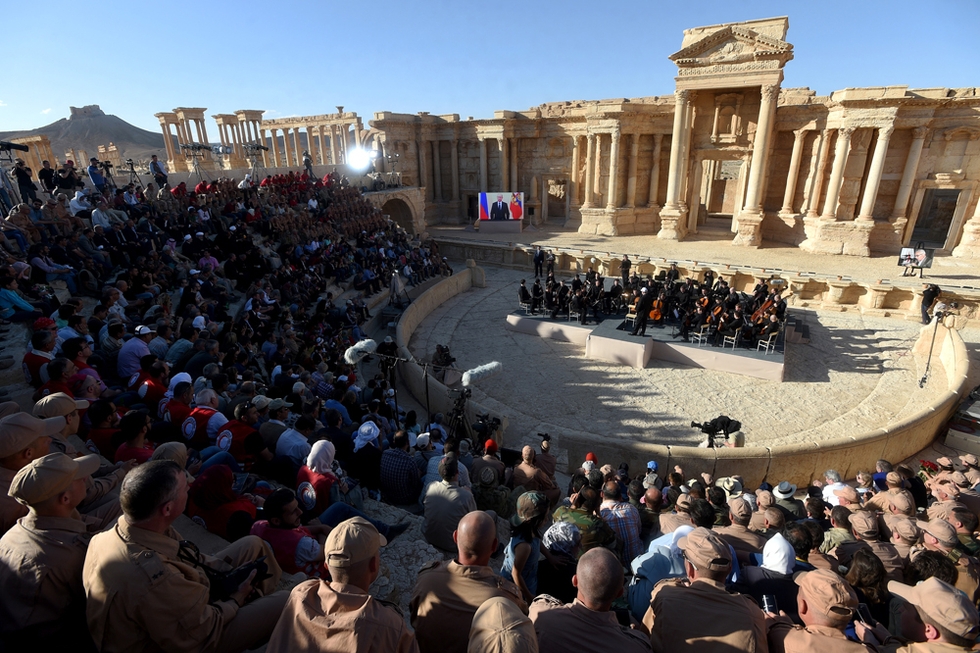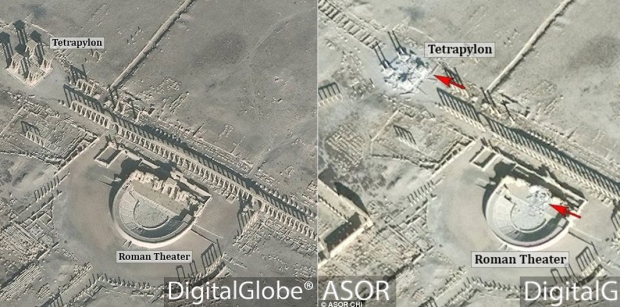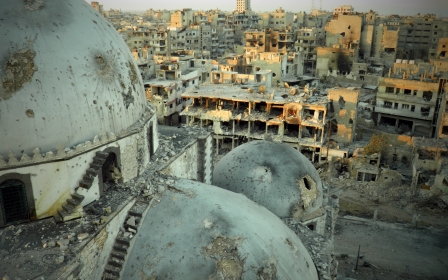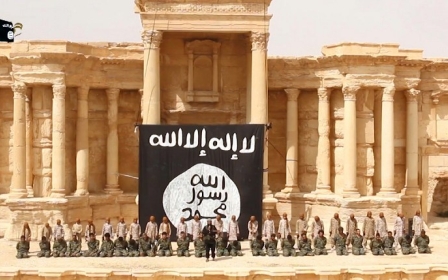Palmyra's monuments demolished in 'new war crime' by IS

Islamic State militants have partially destroyed two ancient monuments in the Syrian city of Palmyra, according to Syria's state news agency and antiquities experts.
The SANA agency and Syria's antiquities chief said the group had destroyed a facade of the site's Roman amphitheatre, dating back to the 1st century AD, in recent days.
They also stated militants had destroyed a Roman "tetrapylon", a four-column structure at the heart of the site.
"Local sources told us that 10 days ago Daesh destroyed the tetrapylon," Maamoun Abdulkarim, the director-general of Syria's antiquities and museums told AFP using an Arabic name for IS.
"Yesterday (Thursday), we received satellite photographs from our colleagues at Boston University showing damage to the facade of the Roman amphitheatre," he added.
Pictures posted on Twitter showed damage at both sites. The picture was stamped ASOR - the American Schools of Oriental Research.
The ASOR Cultural Heritage Initiative, which documents the cultural heritage of Syria and northern Iraq, was quoted by media as saying: "ISIL executed prisoners around the archaeological site, destroyed the tetrapylon and part of the Roman theatre."
The demolitions occurred between 26 December 2016 and 10 January 2017, the institute said.
"The tetrapylon appears to have been intentionally destroyed using explosives. Two columns remain standing, but the majority of the structure has been severely damaged and column drums and debris are visible on the ground around the structure," it said.
"The Roman theatre has sustained damage to the stage backdrop, primarily in the area of the porticus. New stone debris is scattered across the centre of the stage," ASOR added.
The tetrapylon, marking a junction along Palmyra's grand colonnade, comprised a raised stone platform with matching structures of four columns positioned at each of its corners.
Russia held a "celebration" concert in May last year at the ampitheatre after Syrian and Russian forces kicked out IS.
Russian presidential spokesman Dmitry Peskov said Friday's news was "a real tragedy" and proof of the "barbaric actions of the terrorists".
It is the latest report of the group's gradual destruction of the city, a UN world heritage site, which has changed hands several times during the Syrian civil war.
Islamic State reoccupied Palmyra in December, as Syrian and Russian forces concentrated their forces in the battle for Aleppo.
The group was yesterday reported to have murdered a number of state workers and captured fighters in Palmyra's amphitheatre.
"From the first day, I was bracing myself for a terrible outcome," antiquities chief Abdulkarim said.
"We had already witnessed the terror of the first occupation and frankly I had never thought that the city would be occupied for a second time.
"The battle for Palmyra is cultural not political. I have never understood how the international community and the main players in the Syria conflict could accept the fall of Palmyra."
The head of the UN cultural agency said the latest destruction was a war crime and a blow for culture.
"This destruction is a new war crime and an immense loss for the Syrian people and for humanity," said Unesco's director general, Irina Bokova.
"This new blow against cultural heritage, just a few hours after UNESCO received reports about mass executions in the theatre, shows that cultural cleansing by violent extremists is seeking to destroy both human lives and historical monuments in order to deprive the Syrian people of its past and its future."
In its first occupation IS destroyed the 2,000-year-old temple of Baal and the Arch of Victory, along with other priceless artefacts, and killed Khaled al-Asaad, Palmyra’s long-serving leading archaeologist.
It conducted mass executions of prisoners in the amphitheatre.
New MEE newsletter: Jerusalem Dispatch
Sign up to get the latest insights and analysis on Israel-Palestine, alongside Turkey Unpacked and other MEE newsletters
Middle East Eye delivers independent and unrivalled coverage and analysis of the Middle East, North Africa and beyond. To learn more about republishing this content and the associated fees, please fill out this form. More about MEE can be found here.






